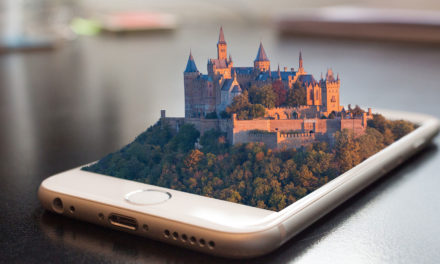A Customer-Centric Guide To The Retail Space Of The Future
November 27, 2018Bricks-and-mortar spaces are an integral part of the next iteration of retail, and they have the potential to play a new, multi-faceted, and valuable role in people’s lives. People are still shopping, and they still need places where they can go. The future retail space will integrate shopping with dining, entertainment, and further initiatives to offer visitors something else in addition to making a purchase and the occasional snack. At the 2017 MAPIC annual international retail property market, the next generation of retail experiences—the ones that integrate leisure with retail—were among the hot topics
As an international board member of the Themed Entertainment Association, I had the privilege of moderating two panels on this overall theme, with participation from an expert group of retail and leisure professionals. The following are a few of the reflections and insights from the discussions during, before, and after the panel events. As the saying goes, to get the full scope, you should have been there. Still, here are some of the significant points to consider for next-generation retailers, whether you are an owner, operator, or shopkeeper.
Family Entertainment Centres Are Not Just For Children
Just think about the great movies and theme parks that provide experiences which can be enjoyed by children and grown-ups alike. Family entertainment centres are more than corners to stash kids into while shopping. The successful ones provide shared, fun moments for the whole family.
To achieve this successfully, we need to have a nuanced perspective of the family definition that includes grandparents, single parents, and siblings of different ages. The family definition now goes beyond mum, dad, son, and daughter, and retail professionals will need to research the specific attributes of the families they engage with, or would like to engage with, in their area.
The Demise Of One-Dimensional Consumerism
The way retailers think of the people entering a shop, mall, or any other retail space, virtual or physical, will inevitably affect how the brand experience is designed. In our new shopper-shopkeeper relationship, customers are more empowered, they look for individualisation, and expect more from a retail space than just wares and discounts.
Perhaps, it is time to abandon the “consumer” label once and for all, and obtain a more nuanced understanding of people when trying to attract and retain their interest and presence. This change in perspective also drives a change in how we create and design spaces. The layout becomes different, as we move from floors of boxed-in shops to more open spaces with more nuanced functionality and new aspects of authenticity.
Shopping Is Social
We are social creatures. We need places where we can go and places where we can be with our friends and families. In other words, shopping and shop browsing are social activities, and the shared experience not only expands beyond the counter but across time and space as memories carried across with social media.

Salling Rooftop is a recent addition to the Salling department store in Aarhus, Denmark, which has become an attraction in its own right. Here visitors are provided with a free space with panoramic views of the city, with no entrance fee, no product push, and no need to purchase food or beverages to enter. Of course, the latter is available as a popular option. Furthermore, to get to the roof, people will have to pass through the department store from the ground up.
People will often come to a space to be part of a group, and for them to choose your space, you should consider what you can offer of relevance to their group rituals and activities. Don’t fill up all your space with shops—people will need places to just be.
Forget about the seller-buyer relationship for a moment, and consider yourself a provider of a space that has the power to frame unforgettable memories. You may even find that if your offering has lasting depth and value, it has the longevity that makes it a place where parents will bring their kids in order for them to relive their parents’ experiences.
It’s ambitious, but it’s possible. A retail space can become part of the local heritage. Culture is not just about art and artefacts.
The Hybrid Space
Bring on the acronyms: AR (augmented reality), AI (artificial intelligence), and VR (virtual reality)—all technological developments heralding a game change in the retail industry. To add perspective, it is interesting to consider what is currently going on in other industries, including the entertainment industry. As new technologies continue to influence leisure time, we also see many physical and non-digital experiences gaining ground, a concept that I explored further in the article “Spotting The Real Reality Trends” on CMO.com.
Many consider the hybrid space to be the future of leisure, including integrated leisure and retail spaces that combine both digital/virtual and physical/real attributes to create a new kind of experience, while applying a good dose of “hybrid thinking” in the conceptual process.
To find the right technology to integrate into a retail space, start with considering who visits, and what fits their social out-of-home experience. Technology is best applied when thinking of people first, gadgets second.
There is no one-size-fits-all solution-in-a-box that will make a retail space become a successful leisure space. To create a truly experiential space, the roles of anyone involved in the retail food chain have to be revisited—from the owner, to the operator, to the shop, to the floor. You will need to design the customer journey before, during, and after the visit, building it from the customer, not the products, as the centre point and outwards.
The Customer’s All-Important Investment
For the retail industry professionals who understand how the world and their customers are changing, vast opportunities lie ahead. Retail, including bricks-and-mortar retail, is evolving, because the customer behaviour is changing, sometimes driven by technology and sometimes by a change in values and expectations about what a retail space should provide.
When asking consumers to come visit your retail space, you are asking them for two things that most do not have in abundance: time and money. If a retail space does not deliver in exchange for the customers’ investment in terms of value for money and valuable, even quality time, it should be no surprise that people will not return or endorse this place.
Those places that do deliver and exceed expectations, however, will most likely play a new, valuable role in the lives of their customers.




